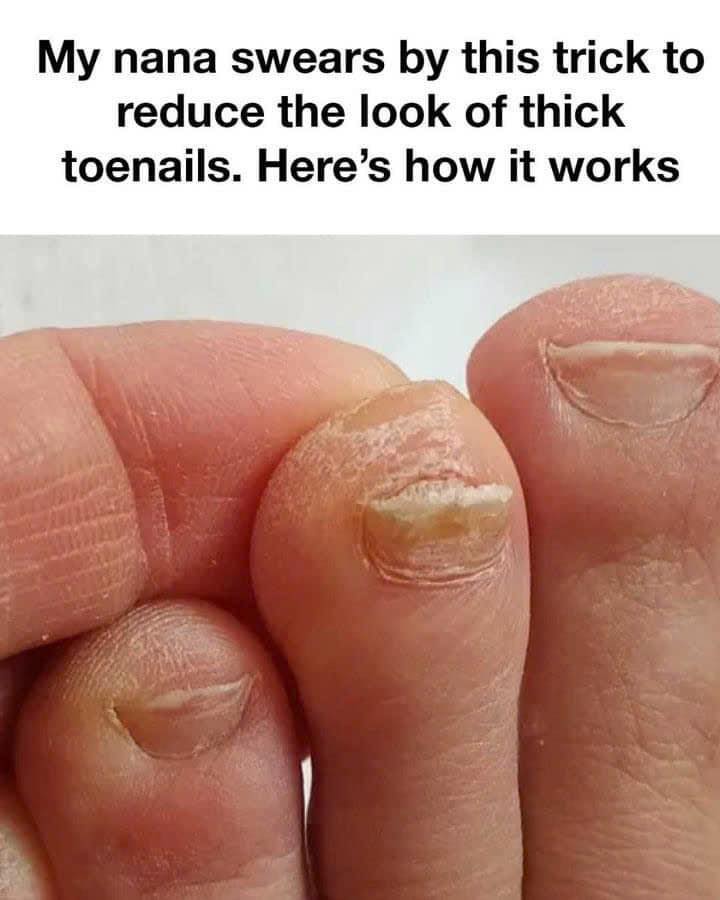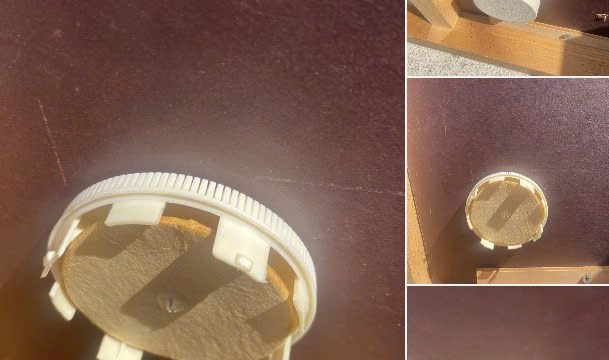Toenail issues are more common than many people realize, affecting individuals across all age groups. Problems like discoloration and thickening are not only aesthetic concerns but can also signal health-related issues. Thickened toenails may cause discomfort, and in some cases, they point to underlying health conditions. While medical treatments are available, home remedies can often serve as an effective initial approach. My grandmother, a firm believer in natural solutions, recommends a simple method for improving the appearance of thick toenails. Her approach is both straightforward and effective—and it can be easily tried at home. Additionally, consider adding vitamins and supplements to support nail health.

Understanding Thick Toenails: Common Causes
Thick toenails can develop for several reasons, including fungal infections, aging, injuries, psoriasis, and poor circulation. Identifying the root cause is essential, but it’s just as important to explore methods to enhance the nails’ appearance. Addressing the symptoms early on can help prevent the condition from worsening and alleviate discomfort.
A Simple Method for Improving Thick Toenails
My grandmother’s approach involves using basic household items to diminish the visibility of thick toenails. This method focuses on softening, cleansing, and carefully managing nail thickness in a way that’s both safe and non-damaging. Her routine emphasizes gentle care to progressively enhance the appearance of the toenails.
Ingredients and Tools You’ll Need
To try this method, gather the following items:
- Warm water
- White vinegar
- Baking soda
- A basin or container large enough for soaking feet
- A soft-bristled nail brush
- A pumice stone or nail file
- Moisturizing lotion or oil
Step-by-Step Guide to the Method
- Warm Water Soak: Begin by filling a basin with warm water and adding half a cup of white vinegar. Soak your feet for about 20 minutes. This helps soften the toenails, making them easier to clean and manage.
- Gentle Scrubbing: After soaking, use a soft-bristled nail brush to gently scrub the toenails and the surrounding areas. This step helps remove any debris around the nail bed and further softens the nails, making them easier to handle.
- Baking Soda Paste: Rinse your feet and create a paste using baking soda and a few drops of water. Apply this paste to your toenails and let it sit for around 10 minutes. Baking soda serves as a gentle exfoliant, which helps smooth out the nail surface.
- Filing: After rinsing off the baking soda paste, carefully file down the thickened nails using a pumice stone or nail file. Avoid excessive filing; slow and steady filing is best to reduce thickness gradually without causing damage.
- Moisturizing: Finally, apply a moisturizing lotion or oil to keep the nails and the surrounding skin hydrated. This final step helps maintain nail flexibility and supports healthy nail growth.
Why This Method Works
Each step in this routine plays a role in improving the appearance of thickened toenails. The vinegar soak softens the nails and has mild antimicrobial properties, helping to reduce any bacterial or fungal presence. Baking soda acts as a gentle exfoliator, smoothing the nail surface without causing irritation. The careful filing helps reduce nail thickness gradually, while the moisturizing step locks in hydration, preventing the nails from becoming dry or brittle.
Additional Tips for Healthy Toenails
Maintaining toenail health is key to preventing further thickening or other issues. Here are some additional tips for keeping toenails healthy:
- Keep Feet Clean and Dry: Good hygiene can prevent fungal infections and reduce the risk of toenail issues.
- Trim Toenails Properly: Trim straight across and avoid cutting too close to the skin, which can lead to ingrown nails.
- Choose Breathable Footwear: Shoes made of breathable materials reduce moisture buildup, minimizing the risk of fungal infections.
- Improve Circulation: Regular exercise promotes healthy blood flow, which supports nail health and growth.
- Monitor for Changes: Keep an eye on any changes in color, texture, or thickness, which could indicate an infection or other issue.
When to See a Professional
While home remedies can improve the appearance and comfort of thick toenails, there are times when professional help is necessary. If you experience persistent pain, severe thickening, discoloration, or other symptoms that don’t improve with home care, consult a healthcare provider. Conditions like fungal infections, psoriasis, or circulatory issues may require prescription treatments or other medical interventions for effective results.
Can Vitamins and Supplements Help?
To support nail health further, consider adding specific vitamins and supplements to your routine. Nutrients such as biotin, vitamin E, and zinc can strengthen nails and improve their appearance. Biotin can reduce brittleness, vitamin E supports circulation, and zinc aids in cellular repair, all of which can contribute to healthier nails over time.
Conclusion: Embrace Healthier Toenails with Simple Care
Thick toenails don’t have to be an ongoing concern. With straightforward home remedies like my grandmother’s approach, you can improve both the look and feel of your toenails. Establishing a regular foot care routine that includes softening, gentle exfoliation, and moisturizing can help achieve healthier, more comfortable nails. Regularly checking for any changes in your toenails and consulting a professional when necessary are also essential parts of foot health.
These easy-to-follow steps and tips can make a noticeable difference over time. By adopting a consistent care routine, you’re likely to see improvements in the appearance and health of your toenails. Embrace these simple practices to keep your toenails in great condition—and remember, a little care goes a long way.





